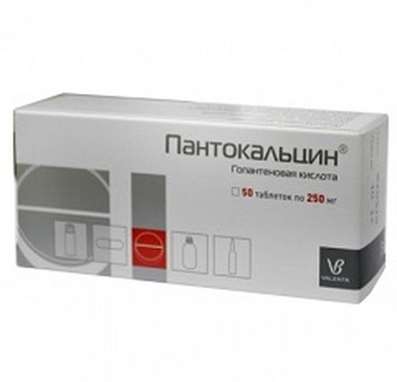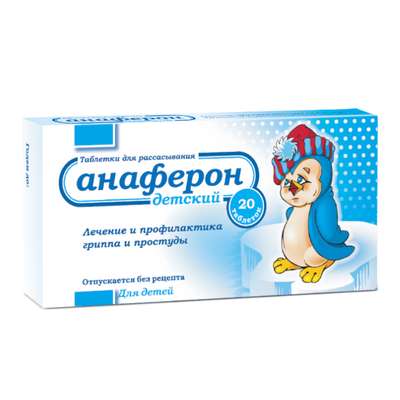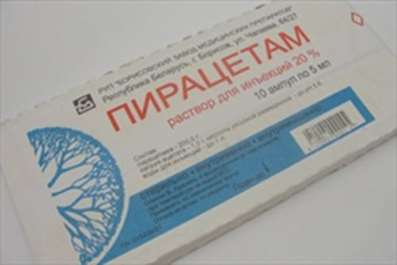Instruction for use: Speridan
I want this, give me price
Dosage form: tablets
Active substance: Risperidone*
ATX
N05AX08 Risperidone
Pharmacological group:
Neuroleptics
The nosological classification (ICD-10)
F03 Dementia, unspecified: Degenerative dementia; Dementia; Dementia presenilnaya; Dementia senile; Primary degenerative dementia; Senile dementia; Senile dementia of the Alzheimer's type; Senile dementia; Syndromes of dementia; Dementia; Mixed Dementia; Mixed forms of dementia; Senile dementia; Senile Dementia
F20 Schizophrenia: Schizophrenic Conditions; An exacerbation of schizophrenia; Schizophrenia; Chronic schizophrenia; Dementia praecox; Bleuler's disease; Psychotic discordant; Dementia early; The febrile form of schizophrenia; Chronic schizophrenic disorder; Psychosis of the schizophrenic type; Acute form of schizophrenia; Acute schizophrenic disorder; Cerebral Organic Insufficiency in Schizophrenia; Acute attack of schizophrenia; Schizophrenic psychosis; Acute schizophrenia; Sluggish schizophrenia; Sluggish schizophrenia with apathoabulic disorders; Acute stage of schizophrenia with agitation
F22.0 Delusional Disorder: Delirium; Acute paranoid state; Othello Syndrome; Paranoid-hallucinatory state; Paranoid state; Paranoid delirium; paranoid psychosis; Paranoid delirium; Attack of delirium; The attack of polymorphic delirium; Psychotic disorder with a predominance of hallucinatory-paranoid symptoms and disorders of thinking; Anxious-delirious component; Anxiety and Paranoid Syndrome
F23.9 Acute and transient psychotic disorder, unspecified: Psychotic disorder; Somatized Mental Disorder; Acute psychotic disorder; Reactive psychosis
F30 Manic episode: Manic-depressive disorder; Manic agitation; Manic state; Manic conditions; Manic condition; Manic syndrome; Acute manic syndrome
F31 Bipolar affective disorder: Mood disorders bipolar; Affective bipolar psychosis; Manic-melancholic psychosis; Intermittent psychosis; Circular psychosis; Cyclophrenia; Bipolar disorders; Bipolar disorders; Bipolar psychosis; Affective insanity; Manic-depressive syndrome; Psycho Manic-Depressive; Depressive episode of bipolar disorder
F39 Mood disturbance [affective], unspecified: Affective disorder; Affective disorders; Dysphoric states; Dysphoric disorder; Psychoemotional Disorder; Affective disorders; Emotional-labile upset; Cyclotimic personality
F91 Behavioral disorders: Juvenile and other behavioral disorders; Destructive behavior; Violation of behavior; Behavior Disorders; Mixed behavioral disorders; Behavioral Disorder; Behavioral disorder in adolescents with 15 years of age and adults; Violations in behavior; Behavioral disorders in childhood; Behavioral disorders in old age; Behavioral disorders in children; Behavioral disorders in children
R45.1 Anxiety and agitation: Agitation; Anxiety; Explosive excitability; Internal stimulation; Excitability; Excitation; Excitation acute; Psychomotor agitation; Hyperexcitability; Motor excitement; Cessation of psychomotor agitation; Nervous excitement; Restlessness; Night trouble; Acute stage of schizophrenia with agitation; Acute mental agitation; Paroxysm of excitation; Overexcitation; Increased excitability; Increased nervous excitability; Increased emotional and cardiac excitability; Increased agitation; Mental arousal; Psychomotor agitation; Psychomotor agitation in psychoses; Psychomotor agitation of an epileptic nature; Psychomotor paroxysm; Psychomotor fit; Symptoms of Excitation; Symptoms of psychomotor agitation; The state of agitation; A state of anxiety; Excitation status; A state of heightened concern; The state of psychomotor agitation; Conditions of anxiety; Excitation conditions; The state of excitement in somatic diseases; Excitation level; Feelings of anxiety; Emotional arousal
R45.6 Physical aggressiveness: Aggressiveness; Aggressive states; Aggression; Aggressive behavior; Autoaggression
Composition and release form
Tablets, coated with a coating.; 2 mg; 4 mg
auxiliary substances: MCC; lactose anhydrous; magnesium stearate; pregelatinized starch; hypromellose; macrogol 6000, titanium dioxide
in a blister of 10 pcs .; in a pack of cardboard 2 blisters.
Description of dosage form
Speridan® 2 mg: biconvex, oval white tablets, with a notch, 10x5 mm.
Speridan® 4 mg: biconvex, oval white tablets, with a notch, 14x7.5 mm.
Characteristic
An antipsychotic agent (neuroleptic), a benzisoxazole derivative.
Pharmachologic effect
Pharmacological action - antipsychotic, antiemetic, sedative, hypothermic.
Has a high tropism for serotonergic 5-HT2 and dopaminergic D2-receptors, also binds to alpha-1-adrenoreceptors and with a slightly lower affinity for H1-histaminergic and alpha2-adrenergic receptors. Has no tropism for cholinergic receptors. Antipsychotic effect due to blockade of dopamine D2 receptors.
70% of the drug is excreted by the kidneys, of which - 35-45% - in the form of a pharmacologically active fraction; with bile 14% of the drug is excreted. With a single admission, high levels of active plasma concentrations and slow excretion in elderly patients and in patients with renal insufficiency are noted.
Indications of the preparation Speridan
schizophrenia (acute and chronic) and other psychotic conditions with productive and / or negative symptoms;
affective disorders in various mental illnesses;
behavioral disorders in patients with dementia in the manifestation of symptoms of aggression (outbursts of anger, physical abuse), in case of activity disorders (excitation, delirium) or psychotic symptoms;
as an adjuvant therapy (as a mood stabilizer) - behavioral disorders in adolescents with 15 years of age and adults with reduced intellectual level or mental retardation, in cases where destructive behavior (aggressiveness, impulsivity, autoaggression) is leading in the clinical picture of the disease;
as an auxiliary therapy in the treatment of mania in bipolar disorders.
Contraindications
hypersensitivity to the components of the drug;
the period of breastfeeding.
Carefully:
diseases of the cardiovascular system (chronic heart failure, suffered myocardial infarction, conduction disorders of the heart muscle);
dehydration and hypovolemia;
disorders of cerebral circulation;
Parkinson's disease, convulsions (including in the anamnesis);
severe renal or hepatic insufficiency (see recommendations for dosing);
drug abuse or drug dependence (see recommendations for dosing);
conditions predisposing to the development of arrhythmias such as "pirouette" (bradycardia, electrolyte imbalance, concomitant drug use, prolonging the QT interval);
brain tumor, intestinal obstruction, cases of acute drug overdose, Reye's syndrome (antiemetic effect of risperidone may mask the symptoms of these conditions);
pregnancy;
children under 15 years of age (efficacy and safety not established).
Application in pregnancy and lactation
The safety of risperidone in pregnant women has not been studied. When pregnancy can be used only if the positive effect justifies the possible risk.
Because risperidone and 9-hydroxy-risperidone enter the breast milk, women who use the drug should not be breast-fed.
Side effects
From the side of the nervous system: insomnia, agitation, anxiety, headache, sometimes - drowsiness, fatigue, dizziness, impaired concentration, blurred vision, rarely - extrapyramidal symptoms (tremor, rigidity, hypersalivation, bradykinesia, akathisia, acute dystonia), mania or hypomania, stroke (in elderly patients with predisposing factors), as well as hypervolemia (either due to polydipsia, or due to the syndrome of inadequate secretion of the antidiuretic hormone), tardive dyskinesia (involuntary rhythmic (hyperthermia, muscular rigidity, instability of autonomic functions, impaired consciousness and increased level of creatine phosphokinase), thermoregulation disorders and epileptic seizures.
On the part of the digestive system: constipation, dyspepsia, nausea or vomiting, abdominal pain, increased activity of "liver" transaminases, dry mouth, hypo- or hypersalivation, anorexia and / or increased appetite, increase or decrease in body weight.
From the cardiovascular system: sometimes - orthostatic hypotension, reflex tachycardia or an increase in blood pressure.
On the part of the organs of hematopoiesis: neutropenia, thrombocytopenia.
On the part of the endocrine system: galactorrhea, gynecomastia, menstrual disorder, amenorrhea, weight gain, hyperglycemia and exacerbation of pre-existing diabetes.
From the genitourinary system: priapism, erectile dysfunction, ejaculation disorders, anorgasmia, urinary incontinence.
Allergic reactions: rhinitis, rash, angioedema, photosensitivity.
From the skin: dry skin, hyperpigmentation, itching, seborrhea.
Other: arthralgia.
Interaction
Given that risperidone has an effect primarily on the central nervous system, it should be used with caution in combination with other central-action drugs and with alcohol. Risperidone reduces the effectiveness of levodopa and other dopamine agonists. Clozapine reduces the clearance of risperidone. When carbamazepine was used, a decrease in the concentration of the active antipsychotic fraction of risperidone in plasma was noted. Similar effects can be observed with the use of other inducers of hepatic enzymes. Phenothiazines, tricyclic antidepressants, and some beta-blockers may increase plasma concentrations of risperidone, but this does not affect the concentration of the active antipsychotic fraction. Fluoxetine can increase the concentration of risperidone in plasma, but to a lesser extent - the concentration of the active antipsychotic fraction. With the use of risperidone, along with other drugs that bind highly to plasma proteins, there is no clinically significant displacement of any drug from the plasma protein fraction. Hypotensive drugs increase the severity of blood pressure lowering on the background of risperidone.
Dosing and Administration
Inside.
Schizophrenia. Adults and children over 15 years of age Speridan® is prescribed 1 or 2 times a day. The initial dose is 2 mg / day. On the second day, the dose should be increased to 4 mg / day. From this moment the dose can either be kept at the same level, or individually adjusted if necessary. Usually the optimal dose is 4-6 mg / day. In some cases, a slower dose increase and lower initial and maintenance doses may be justified. Doses above 10 mg / day did not show higher efficacy compared with smaller doses and could cause extrapyramidal symptoms. Due to the fact that safety of doses above 16 mg / day has not been studied, doses above this level can not be used. Information on use for the treatment of schizophrenia in children under the age of 15 is not available.
Elderly patients. Recommended initial dose of 0.5 mg per reception 2 times a day. Dosage can individually increase by 0.5 mg 2 times a day to 1-2 mg 2 times a day.
Diseases of the liver and kidneys. Recommended initial dose of 0.5 mg per reception 2 times a day. This dose can be gradually increased to 1-2 mg per reception 2 times a day.
Drug abuse or drug dependence. The recommended daily dose of the drug is 2-4 mg.
Behavioral disorders in patients with dementia. An initial dose of 0.25 mg per reception is recommended twice a day (an adequate dosage form should be used). Dosage, if necessary, can individually increase by 0.25 mg 2 times a day, not more often than every other day. For most patients, the optimal dose is 0.5 mg twice daily. However, some patients receive 1 mg 2 times a day. Once the optimal dose is reached, the drug may be recommended once a day.
Mania in bipolar disorders. The recommended initial dose of the drug is 2 mg per day for 1 dose. If necessary, this dose may be increased by 2 mg per day, not more often than every other day. For most patients, the optimal dose is 2-6 mg / day.
Behavioral disorders in patients with mental retardation.
Patients with a body weight of 50 kg or more: the recommended initial dose of the drug is 0.5 mg once a day. If necessary, this dose can be increased by 0.5 mg per day, not more often than every other day. For most patients, the optimal dose is a dose of 1 mg per day, but for some, 0.5 mg per day or up to 1.5 mg per day.
Patients weighing less than 50 kg: the recommended initial dose of the drug is 0.25 mg once a day. If necessary, this dose can be increased by 0.25 mg per day, not more often than every other day. For most patients, the optimal dose is 0.5 mg per day, but for some, 0.25 mg per day or 0.75 mg per day.
Long-term use of Speridan ® in adolescents should be carried out under the constant supervision of a doctor.
Use in children younger than 15 years is not recommended.
Overdose
Symptoms: drowsiness, sedation, depression, tachycardia, arterial hypotension, extrapyramidal disorders, in rare cases - prolongation of the QT interval.
Treatment: it is necessary to ensure free airway patency to ensure adequate oxygenation and ventilation, gastric lavage (after intubation, if the patient is unconscious) and the appointment of activated carbon in combination with laxatives. Symptomatic therapy aimed at maintaining vital body functions. For timely diagnosis of possible cardiac arrhythmias, ECG monitoring should be started as soon as possible. Careful medical supervision and ECG monitoring are performed until the symptoms of intoxication disappear completely. There is no specific antidote.
Special instructions
When schizophrenia, at the beginning of treatment with risperidone, it is recommended to cancel the previous therapy, if it is clinically justified. If patients are transferred from depot therapy to forms of antipsychotics, then risperidone should be taken instead of the next scheduled injection. Periodically, the need to continue therapy with antiparkinsonian drugs should be evaluated. In connection with the alpha-adrenoblocking action of risperidone, orthostatic hypotension may occur, especially during the initial dose selection. If hypotension occurs, consider lowering the dose. In patients with diseases of the cardiovascular system, as well as in dehydration, hypovolemia or cerebrovascular disorders, the dose should be increased gradually, according to recommendations (see "Method of administration and dose"). The occurrence of extrapyramidal symptoms is a risk factor for the development of tardive dyskinesia. In case of signs and symptoms of tardive dyskinesia, consideration should be given to the abolition of all antipsychotics. When neuroleptic malignant syndrome characterized by hyperthermia, muscle rigidity, instability of autonomic functions, impaired consciousness and increased level of creatine phosphokinase, it is necessary to cancel all antipsychotic drugs, including risperidone. With the withdrawal of carbamazepine and other inducers of "liver" enzymes, the dose of risperidone should be reduced. Patients are advised to refrain from overeating due to the possibility of weight gain. During treatment, it is necessary to avoid practicing potentially dangerous activities that require an increased concentration of attention and speed of psychomotor reactions, as well as alcohol intake.
Storage conditions for Speridan
At a temperature of no higher than 25 ° C.
Keep out of the reach of children.
Shelf life of Speridan
3 years.
Do not use after the expiry date printed on the package.

 Cart
Cart





